隐藏山野的金城汤池
2018-08-08
◇文|本刊记者 胡 婷 图|游 宇

在重庆垫江县百家镇,一个叫鹤游坪的地方,有一座“世界上最大的山寨式城堡”。这座山寨式城堡面积167平方公里,与长寿湖相邻。
在低丘矮陵中,偶然入眼的城垣断壁,掩藏在草木中的废墟,打开了历史的烟云。
In Heyouping of Baijia Town,Chongqing sits “the world’s largest fastness castle” which covers an area of 167 km2and is adjacent to Changshou Lake.
Dilapidated cities and ruins are hidden in the woods and hills witness the historical upheavals here.
遗迹尚存的城门寨卡Remains of City Gates
从垫江县城出发到百家镇静风村,再从乡村公路转上一条岔路,一直往前,便能见到一座残存的大门,叫做“天六门大卡”。天六门依山而建,坐北朝南,门前是悬崖绝壁,地势险要。
天六门卡居高地而建,卡高5米,宽9米,全为条石砌成。城门石质拱形,拱顶由十余块长达三米的条石砌成。卡门上方有一块匾额,匾额构图讲究,朵朵祥云飘绕其间,中书楷体“天六门”三个大字,阴刻平雕。左右两边门坊上有楷书阴刻对联——险道严关雄百二,高盘古刹冠三千。文字在“文革”期间被破坏,现存模糊外形,但仍依稀可辨。
城门内,城门上方和中间的位置都凿有左右对称的石孔。根据石孔的形状及大小,可以推测这些石洞应该是在关闭城门时插门闩的闩孔。
当地老人说,天六门大卡两侧还延伸有40余米的寨墙,都是由岩石砌成,如今都已被破坏。
从史料上看,鹤游坪是一个长35公里,宽15公里的孤高台地,“坪”的四周都是悬崖绝壁。古城堡的城墙正是一条沿着岩轮(即坪的四周边缘)依山势而建的、高5~10米、宽3~4米、周长达105公里(有些地方是利用悬岩峭壁)的城墙。
在通往坪上交通要道处所修建的城门,被称为“卡子”。其中,重要的地方叫“大卡”,为拱型石料建筑城门设施。一般的地方叫“小卡”,为平型石料建筑城门设施。还有少数特别重要的地方,同时在相隔不远处建有大卡和小卡。在卡子与卡子之间,是用大型条石垒成的石墙相互连接起来的,构成了卡连路、路通卡,形成了“有路必有卡,每卡必有坚固的石门封锁”的完整防御体系。
Travelling from Dianjiang County to Jingfeng Village,you can see a desolated gate named “Tianliumen Gate” standing on a branch of a country road.Seated facing the south,the gate perched against mountains and at the edge of cliffs,enjoying precipitous terrain.
Built on a highland,the stone gate was 5 meters tall and 9 meters wide. It was shaped into an arch with a vault piled by over ten 3-meter-long stone.Above the gate hung a horizontal inscribed board carved with three Chinese characters “Tian Liu Men” written in regular script in the middle which was surrounded by auspicious clouds. Characters of the couplet carved on the two pillars were sabotaged during the Cultural Revolution Period (1966-1976),but visitors can still tell the contents through their rough shapes.
Symmetrical stone holes were chiseled above and in the middle of the city gate. According to the shape and size of these holes,we can speculate that they were used to insert the latch when it was needed to close the gate.
Local seniors introduced that there were over 40 meters of rock walls stretching from both sides of the gate,but were all destroyed to ruins.
According to historical records,Heyouping was an isolated highland extending 35km from north to south and 15km from east to west,and surrounded by cliffs. With heights ranging from 5 to 10m,widths from 3 to 4m and a perimeter of 105km (including some parts of cliffs),city walls of the ancient castle were built along the edges of the highland.
City gates built on the paths to the highland were called “Qiazi”,of which the vital ones called“Daqia” were made of arch-shaped stone and the common ones called “Xiaoqia” were made of flatshaped stone. Additionally,both kinds of Qiazi would be set at few places with great significance.Between these gates,long giant stone was piled to link them,and thus formed an integrated defensive system featuring “one path,one Qiazi,one firm rock gate”.
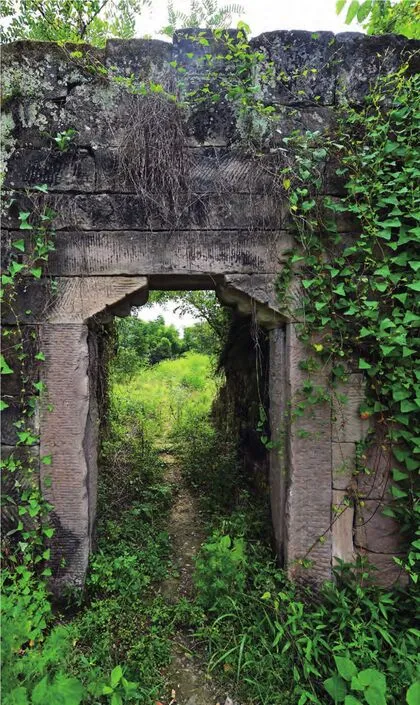
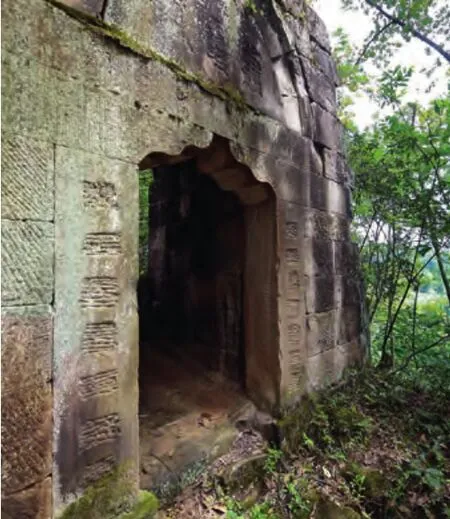


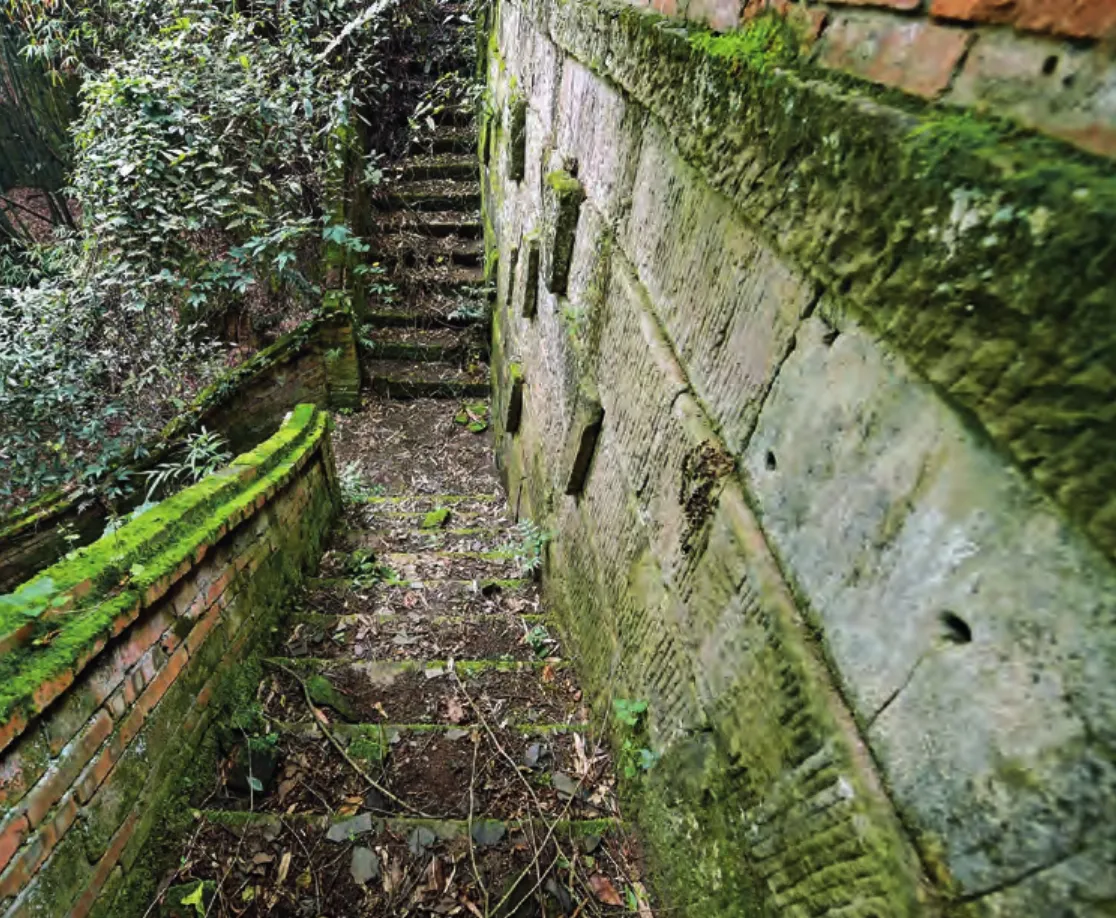
世界最大的军事古城堡The World’s Largest Ancient Military Castle
曾有民谚这样描述:“垫江的城墙丰都的街,分州的衙门朝廷的官。”鹤游坪古城堡以其城垣之长,城门之多,城堡面积之大,极为罕见。
根据卫星地图资料初步计算,鹤游坪古堡城垣长度为80公里。有人说,由于鹤游坪古城的城垣是依照其四周岩轮来修筑的,不是标准的直线或者圆弧,而是天然的折线形,其城垣长度应远超80公里。
按城垣长度计算,国外最大的是法国巴黎的城垣,长度为29.5公里。在国内,已公认的最大古城是明代的南京城,其城墙总长35.267公里。从现在有资料来看,鹤游坪应是世界上城垣最长的古城。
鹤游坪共建有36个大城门和72个小城门,不少地方还留有卡子和城墙遗址。由于年代久远,72个小卡遗址现在缺乏详细的资料,但36个大卡,却都有迹可循。
在鹤游坪古城堡,其城垣内有严家、百家等乡场8个。
为何要在鹤游坪修建如此庞大的军事古堡?
据《垫江县志》载,垫江鹤游坪古城堡建于清嘉七年(1802年),当时,这里发生了川陕白莲教大起义,起初由刘义顺发动。起义失败后,刘文澧以办团练为名,暗中打造兵器,组织教徒训练。1857年3月3日(清嘉庆七年农历二月初八) 午夜,刘文澧率领三百多人祭旗起义。义军头包青布,身穿青褂,手执黑旗,称为“青号军”,攻入分州城,给清廷极大震动。后来,清廷派出大军,镇压了起义。
随后,清廷在鹤游坪设立涪州分州同署,也就是现在的地级市,“因旧寨为城,名保和城”,当地居民称“分州城”,首任州官殷辂打着保一方平安、加强安全措施的旗号,发动绅士和民众,在鹤游坪建筑防御工事。
由此,鹤游坪古堡便出现在世人面前。
As the saying goes,“Dianjiang is rich in city walls while Fengdu in streets.” the Heyouping Ancient Castle was renowned for its rarity in long city walls,numerous city gates and extensive areas.
According to the primary calculation from satellite maps,it is estimated that city walls of the Heyouping Ancient Castle stretched 80 kilometers.Some people,however,said that the exact length of the city walls were far more than that figure because they were built to broken lines in accordance with the outline of surrounding rocks.
Calculated by the length of city wall,the one in Paris tops foreign countries with a length of 29.5 kilometers. In China,the largest ancient city that has been generally acknowledged is the Nanjing City in the Ming Dynasty (1368-1644),with a total length of 35.267 kilometers of city walls. Judging from current documents,Heyouping should be the ancient city with the world’s longest city walls.
Heyouping was home to 36 large city gates and 72 small ones,and a few places still reserve remains of Qiazi and city walls. Although data of the small city gates were gone in the long river of history,but the large ones still have traces to learn.
The Heyouping Ancient Castle boasted 8 markets such as Yanjia Market and Baijia Market.
Why would the ancient people build such an enormous military castle in Heyouping?
According to The History of Dianjiang County,the Heyouping Ancient Castle was built in the seventh year of Emperor Jiaqing of the Qing Dynasty(1802) when Liu Yishun started the White Lotus Society Uprising. After the failure of the first uprising,Liu Wenli forged weapons and arranged training under the table with an excuse of organizing a militia. In the midnight of March 3,1857 (the 8th day of February in the Chinese lunar calendar),Liu launched another uprising with over 300 men. The insurrectionary army dressed in indigo and holding black flags invaded Fenzhou City,shocking the Qing Government. But the uprising was then put down by the government army deployed by the ruler.
After that,the Qing Government established an administrative area to rule Fuzhou and Fenzhou which are the current prefecture-level cities. The locals called the area “Fenzhou City”. Under the banner of maintaining peace and strengthening safety measures,the first officer Yin Lu advocated squires and the public to build fortifications in Heyouping.
The Heyouping Ancient Castle,therefore,made its appearance in the world.

城中堡垒的层层防御Layers of Fortifications in the Castle
大城堡内的小城堡,当地人称为寨。在鹤游坪,不仅有庞大的军事古堡,大城内又有小城,小城内又有石寨和碉楼,形成了严密的防御格局。
越过天六门卡,约一公里路程,便到了永平寨。站在远处放眼望去,巍巍古寨雄踞坪南,绵绵城堡坐镇山岗。寨子依山而建,地势高陡,寨墙基座和墙体下半部分均用岩石砌成,寨子被高高的寨墙环绕,气势磅礴。
在鹤游坪,共建有48座较大的石寨,在国内十分罕见。
站在寨门前,依稀可见大寨门上用楷书刻的一副楹联——雄踞坪南如磐石固,险塞川东似泰山安。寨门上方的匾上有“咸丰七年又五月初十立”题记。
寨分为内外两层,外寨占地40亩,内寨占地10亩,内寨城墙高5米以上,墙厚3米。
清代嘉庆年间,鹤游坪出了一个大富绅,就是居住在缘柏山的何拔。据《何氏族谱》记载,何拔的祖先是元代至正年间“湖广填四川”时,由麻城迁到鹤游坪的。经数代经营,创业有成,到了何拔这一代,已拥有3000多石地租的田产,成了鹤游坪上第一首富。
到清代中叶,白莲教起义引发战乱。何拔为了保卫家园,就和儿子何南亭商量,筹划修建石寨,以求安居乐业。
何拔父子独自出资修寨,花了不少钱粮,从清代道光二十八年至咸丰七年(公元1848-1857年),历经10年终于把石寨建成。为图永久太平,何拔父子将石寨命名为“永平寨”。
然而,却未能如愿。
走进永平寨内,寨门两侧设置炮台,作打枪、放炮之用。当地老人说:“以前这里还有木门,厚得很,外面包了铁皮,相当结实,还可以防弹。有土匪攻寨时,十几个人用滚筒树都很难撞开。”
寨内还修有碉楼,同时也是一种更小的寨子,如封闭的亭阁,突出在村寨中。所有这些石寨的寨墙两面,一般均用石头砌成,中间夹土,高4~6米。寨墙上建有垛口,供瞭望、放箭、打枪之用。
民国初年,“范傻儿”的队伍曾驻扎在鹤游坪,白家场一带的富绅都跑到永平寨躲藏。于是,“范傻儿”的部队将永平寨团团围住,企图用困死的办法逼寨内人就范。
在被围困的三个月里,寨内的人就用平时贮存的粮食和水塘里的水维系。若有士兵爬寨墙侦察寨内防守情况,寨内人就用土炮射击。
如今,鹤游坪古堡寨卡已只有断壁残垣。在冷兵器时代,寨卡的防御工事,为这一方百姓带来了安定的生活。

Small forts in the large castle are called stockades by locals. Heyouping was home to a large ancient military castle,small forts,stone stockades and watchtowers,forming a tight defensive structure.
The Yongping Stockade is one kilometer away from the Tianliumen Gate. Standing afar,you can see the ancient stockade lying against mountains in South Heyouping. The terrain is steep,and the base and lower part of walls are made of rocks. Surrounded by lofty walls,the stockade shows its magnificence to visitors.
Heyouping boasts 48 relatively enormous stone stockades,which is quite rare in China.
Standing before the gate of the stockade,you can still see a couplet carved in regular script with characters “Lying in South Heyouping Like a Firm Monolith,Standing in East Sichuan Like Magnificent Mount Tai”. The plaque above the gate was carved with an inscription “Built in the 5th Day of May in the Chinese Lunar Calendar in the Seventh Year of Emperor Xianfeng of the Qing Dynasty (1857)”.
The stockade included two layers,of which the outside one covered an area of 40 mu (about 2.67 hectares) and the inside one 10 mu (about 0.67 hectares). City walls of the inside stockade were 5-plus meters tall and 3meters thick.
During the reign of Emperor Jiaqing of the Qing Dynasty (1796-1820),Heyouping was home to a rich man named He Ba who lived in Yuanboshan Mountain. According to The Family Tree of He Family,He’s ancestors moved from Macheng to Heyouping in a massive immigration happened during the reign of Emperor Huizong of the Yuan Dynasty (1341-1368). Due to the successful business ran by his elder generations,He Ba’s fields boasted an annual grain production of over 150 tons,making him the richest man in Heyouping.

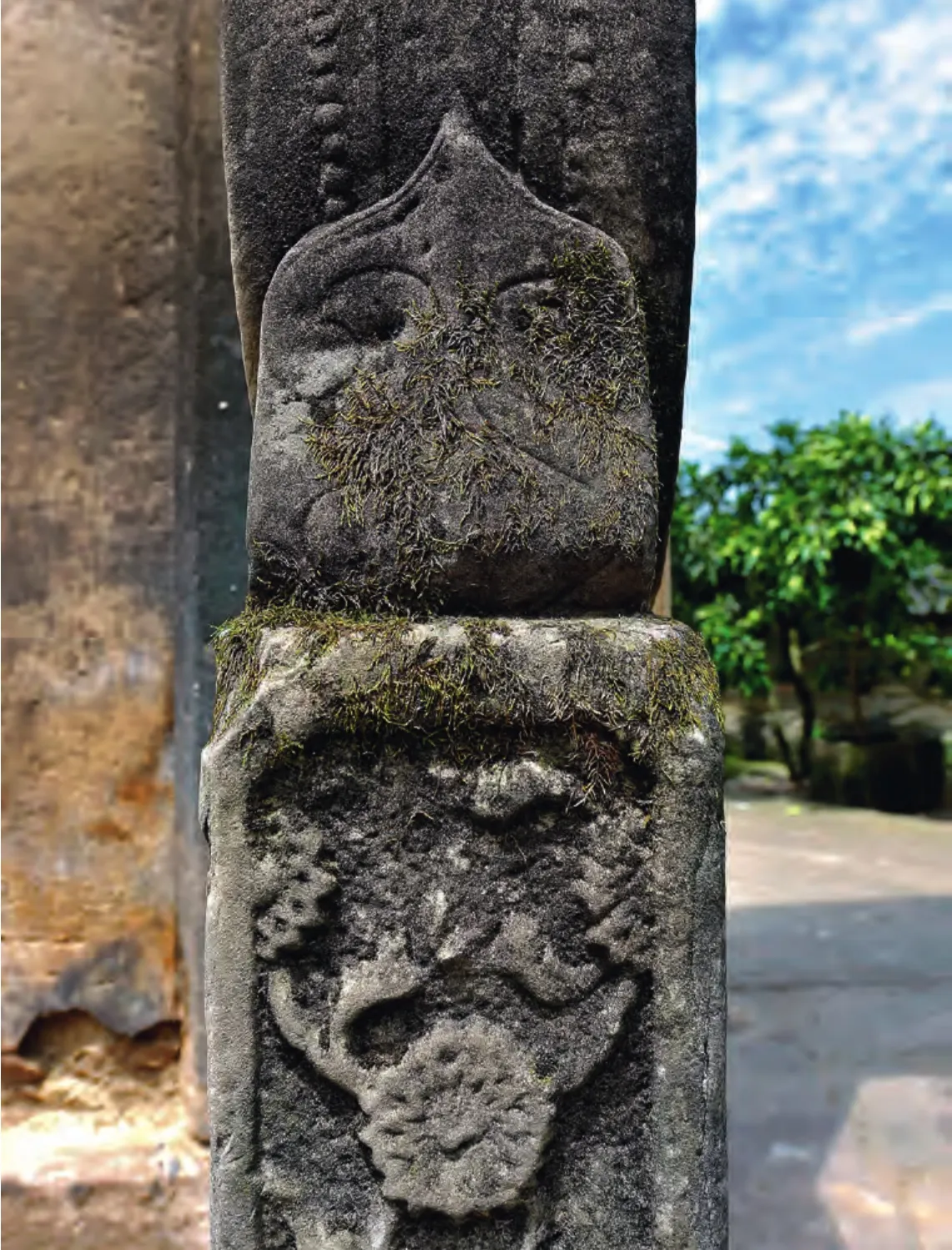
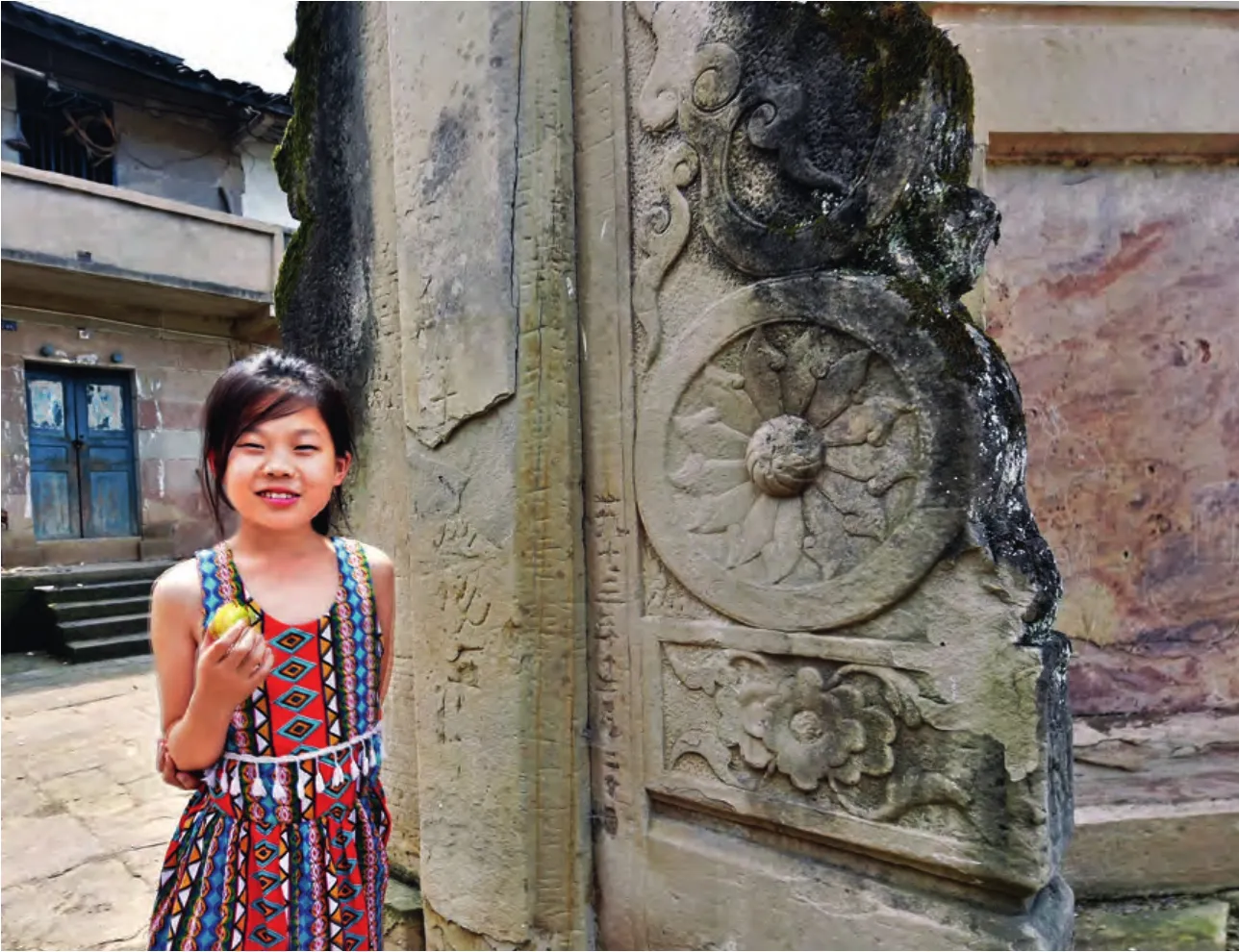
As the White Lotus Society started an uprising during the middle period of the Qing Dynasty,He Ba and his son He Nanting planned to build a stone stockade to safeguard their homeland.
With a great amount of funds and grains,they spent 10 years (1848-1857) finishing the construction of the stone stockade and named it “Yongping Stockade” for everlasting peace.
However,things went contrary to their wishes.
Entering the Yongping Stockade,you can see batteries set at the both sides of the gate for shooting and artillery. “The stockade was equipped with a firm wooden gate covered with iron sheets,” local seniors said,“Even a dozen of bandits using a trunk could not burst into the gate.”
Watchtowers,also a kind of smaller stockade such as closed pavilion,were scattered in the stockade. Both sides of the walls of these stone stockades,with a height of 4-6m,were made of stone and mud.Battlements were hollowed on the wall for watching,shooting and arrows.
In the first year of the Republic of China (1912),Fan Shaozeng’s troops were stationed in Heyouping. In order to push the rich sheltering in the Yongping Stockade into surrendering,the troops besieged the stockade for three consecutive months.
During that period,people trapped in the stockade maintained their lives with grain storage and water in pools. The guardians would fire if the enemy climbed up walls to scout the defensive situation in the stockade.
Stockades of the Heyouping Ancient Castle remain ruins now. In the era of cold weapons,stockades’ fortifications brought a peaceful life for local residents.
